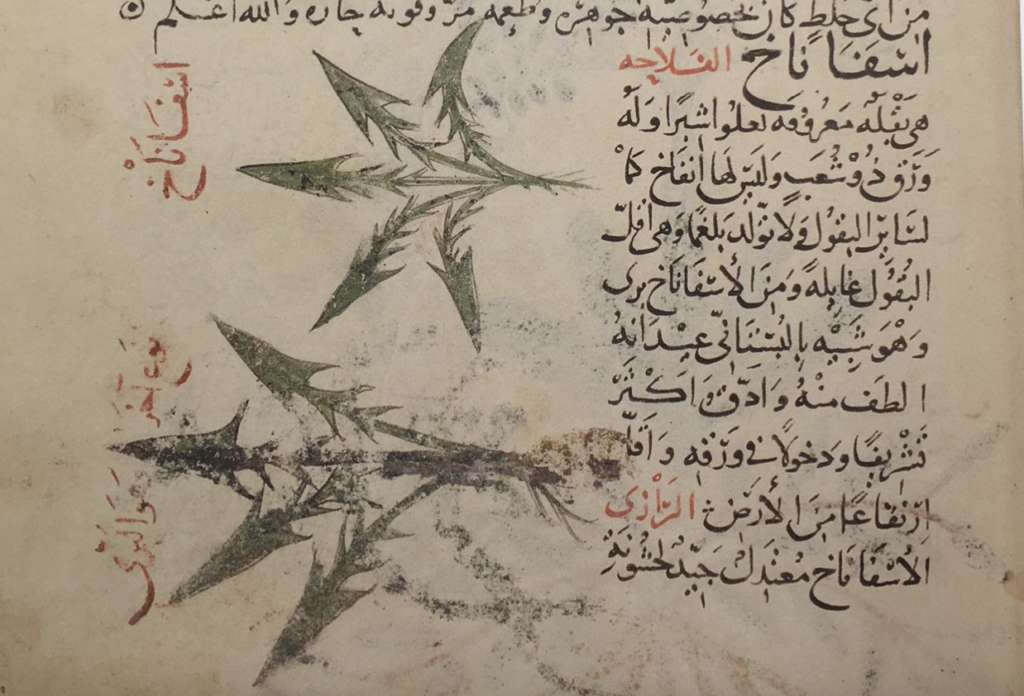The ancestor of spinach (Spinacia oleracea) goes back to eastern Asia, the region around present-day Nepal. It was unknown in Greek and Roman Antiquity. The oldest references date back to Sasanid Persia. Spinach was one of the earliest crops to be introduced into Europe by the Arabs, and arrived in al-Andalus (Muslim Spain) by the 11th century.
In Arabic, it is usually known as i/asfānākh (إسفاناخ) or isfānāj (إسفاناج), from the Persian sipānākh (سپاناخ; also sipānāj/سپاناج), but other names such as baqla dustiyya or dustī are also occasionally found. According to the Andalusian botanist al-Ishbīlī, spinach was planted in autumn and eaten in winter. It quickly became quite popular and his compatriot, the agronomist Ibn al-ʿAwwām referred to it as ‘the prince of vegetables’ (ra’īs al-buqūl). One wonders whether that would have helped to convince children at the time to eat it!
It was not infrequently used in cooking, often in stews with lamb. Medicinally, it was considered nutritious, detergent and laxative (Ibn Sina). It is useful against back pains as well as coughs. However, it is difficult to digest.
Al-Samarqandi (12th century) advised that for people with too much heat, spinach should be prepared with barley kishk (sun-dried yoghurt) and almond oil, whereas those with cold temperaments should eat it with fatty meat, and rice with spices.

